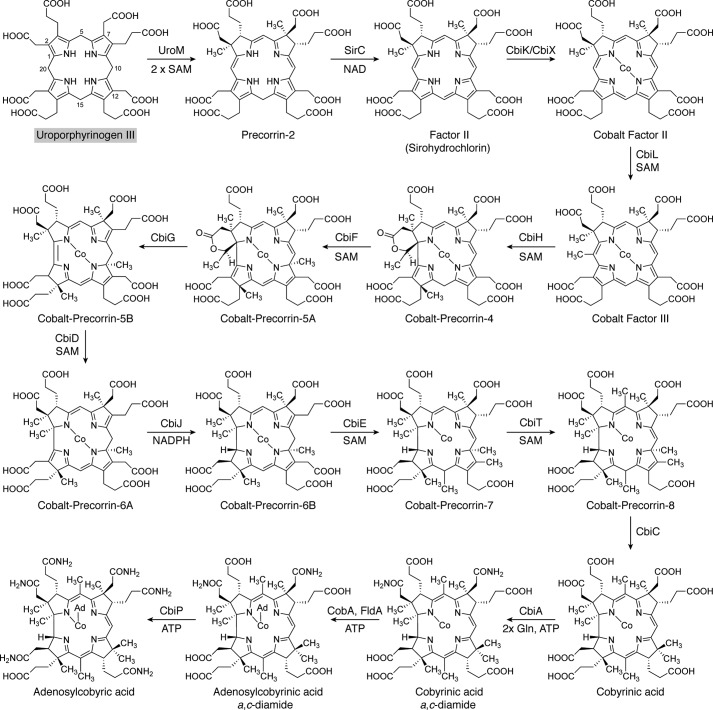Figure 6.
The anaerobic biosynthesis of adenosylcobyric acid from uroporphyrinogen III. The aerobic pathway starts with the synthesis of sirohydrochlorin, which is sometimes also referred to as Factor II. Metal insertion at this stage generates cobalt-sirohydrochlorin, which then undergoes a further methylation at C20 to give cobalt-factor III. Ring contraction is mediated by CbiH, which forms a δ-lactone in the generation of cobalt-precorrin-4. Further methylations coupled with lactone ring opening and rearrangement give rise to cobyrinic acid. Amidations together with adenosylation ultimately give rise to the formation of adenosylcobyric acid. The shaded box surrounding uroporphyrinogen III coordinates with other pathway figures and the summary in Fig. 14.

